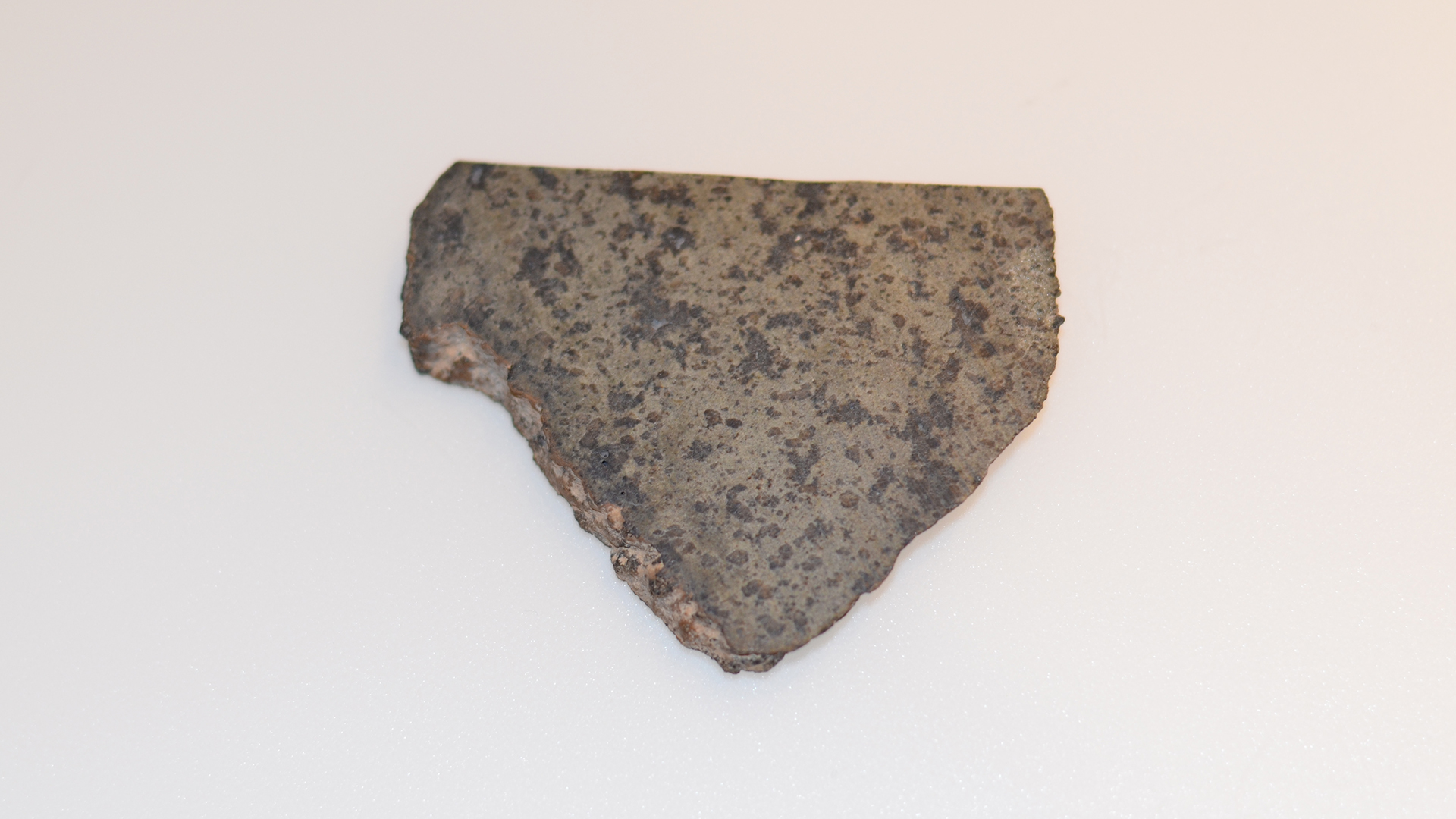A Martian meteorite is going home, in NASA's Perseverance mission launch
It traveled over 62 million miles to get to Earth, but the Natural History Museum is sending it back.

A piece of Mars that fell to Earth decades ago is heading back to the Red Planet.
When NASA's Perseverance rover mission lifts off on Thursday (July 30) — if all goes according to schedule — one object on board won't be visiting Mars for the first time; it'll be going home. A Martian meteorite that was discovered in Oman in 1999 has been part of the collection of the Natural History Museum (NHM) in London since 2000. Known as Sayh al Uhamiyr 008 or SaU 008, the space rock is thought to have been blasted off Mars by an impact between 600,000 and 700,000 years ago.
For hundreds of thousands of years, that hunk of Martian rock roamed our solar system, until a bit of it landed on Earth. And now, NASA's Mars 2020 launch will carry part of the precious meteorite back to Mars, where it will be used by the rover's instrument SHERLOC (Scanning Habitable Environments with Raman and Luminescence for Organics and Chemicals) as test material for on-site calibration, NHM representatives said in a statement.
Related: 6 reasons astrobiologists are holding out hope for life on Mars
While meteorites in the NHM collection often travel around the world for scientific study, this is the first time that one of their specimens will leave the planet, said NHM Head of Earth Sciences Collections and Principal Curator of Meteorites Caroline Smith, a member of the Mars 2020 mission's science team.
SHERLOC is mounted on a turret at the end of the rover's robotic arm. The instrument combines a camera, a fluorescence spectrometer and a high-precision laser to identify organic molecules, minerals and potential signs of life in rock samples on the Martian surface and near subsurface, according to NASA.

Calibrating SHERLOC with the SaU 008 meteorite once the rover is on Mars will confirm that the instrument is functional before it analyzes Martian rock samples, according to the NHM statement.
Sign up for the Live Science daily newsletter now
Get the world’s most fascinating discoveries delivered straight to your inbox.
"The piece that we are sending was specifically chosen because it is the right material in terms of chemistry, but also it is a very tough rock. Some of the Martian meteorites we have are very fragile. This meteorite is as tough as old boots," Smith said.
"In addition, studying this sample over the course of the mission will help us to understand the chemical interactions between the Martian surface and its atmosphere," Smith said.
Liftoff for the Mars 2020 Perseverance rover is scheduled for 7:50 a.m. ET on July 30, live coverage begins at 7 a.m. ET on NASA TV and on the agency's website.
Originally published on Live Science.

Mindy Weisberger is an editor at Scholastic and a former Live Science channel editor and senior writer. She has reported on general science, covering climate change, paleontology, biology and space. Mindy studied film at Columbia University; prior to Live Science she produced, wrote and directed media for the American Museum of Natural History in New York City. Her videos about dinosaurs, astrophysics, biodiversity and evolution appear in museums and science centers worldwide, earning awards such as the CINE Golden Eagle and the Communicator Award of Excellence. Her writing has also appeared in Scientific American, The Washington Post and How It Works Magazine. Her book "Rise of the Zombie Bugs: The Surprising Science of Parasitic Mind Control" will be published in spring 2025 by Johns Hopkins University Press.









